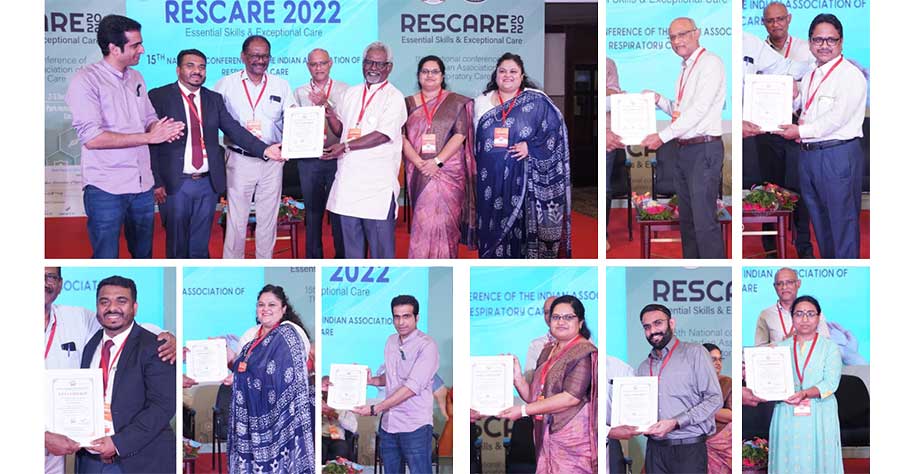
Taiwan Society for Respiratory Therapy Held 32nd International Symposium and Re-Elected New Directors and Supervisors
April 21, 2022
Fellowship Awarded from the Indian Association of Respiratory Care (IARC)
December 7, 2022During the early months of the pandemic, it became imperative to share best practices for the care and treatment of patients with SARS CoV-2. This new infectious agent, with potentially new pathogenesis and an unprecedented number of critically ill patients, tested critical care teams around the world. Additionally, this was further complicated by the spreading of misinformation and disinformation. For low and middle-income countries (LMICs), these problems were amplified by the lack of existing infrastructure, staff, and expertise. So, the world health organization (WHO) quickly brought experts from around the world together to remind caregivers of the basics of physiology and critical care practice. They then realized this information had to be presented in a usable format.
Thus, the Clinical Care for Severe Acute Respiratory Infection Toolkit was developed.
Michael Lipnick, MD, an anesthesiologist from UCSF and Co-Director of the UCSF Center for Health Equity in Surgery & Anesthesia, was the lead for the sections on oxygen therapy, respiratory care, and mechanical ventilation. He enlisted AARC members Richard Kallet, MS, RRT, FAARC, and Rich Branson, MSc, RRT, FAARC, FCCM.
“In many ways, this was a return to basics,” Branson said. “It became clear that many groups—particularly in LMICs—needed to understand background physiology and technology.”
Branson continued to note that oxygen delivery and oxygen delivery systems were incompletely understood, hospital-based oxygen systems (e.g., liquid, concentrators, and cylinders) were under strain, and only a few hospital systems understood the design and demand of their oxygen supply.
“The SARI toolkit developed by the WHO is an enormous accomplishment in providing a concise, comprehensive and wonderfully accessible source of information encompassing essentially all aspects of caring for patients with severe presentations of acute respiratory infections,” Kallet said. “The organization and provision of teaching aids, such as memory aids and guidelines, as well as the high-quality illustrations attest to the excellent knowledgebase, care and thoughtfulness of the organizers, authors and contributors. Although this is a particularly useful book for providers in the setting of limited healthcare resources, I would highly recommend that every respiratory therapist as well as students take full advantage of this free resource and download the pdf of this handbook.”
In addition to Branson and Kallet, AARC member Rob Chatburn, RRT, served as a consultant for the project.
“Understanding the different ventilators and the application of mechanical ventilation was also in demand,” Branson said. “One of the great learning experiences of this pandemic was that modern technology in settings with no expertise to use it was a poor use of resources.”
In addition to their expertise, the toolkit development group included graphics support, which provided the figures that demonstrated use and principles in a simple-to-understand format.
“It was a distinct honor and privilege for a couple of respiratory therapists with over 80 years of experience between them to bring a lifetime of experiences to a modern pandemic,” Branson said.



